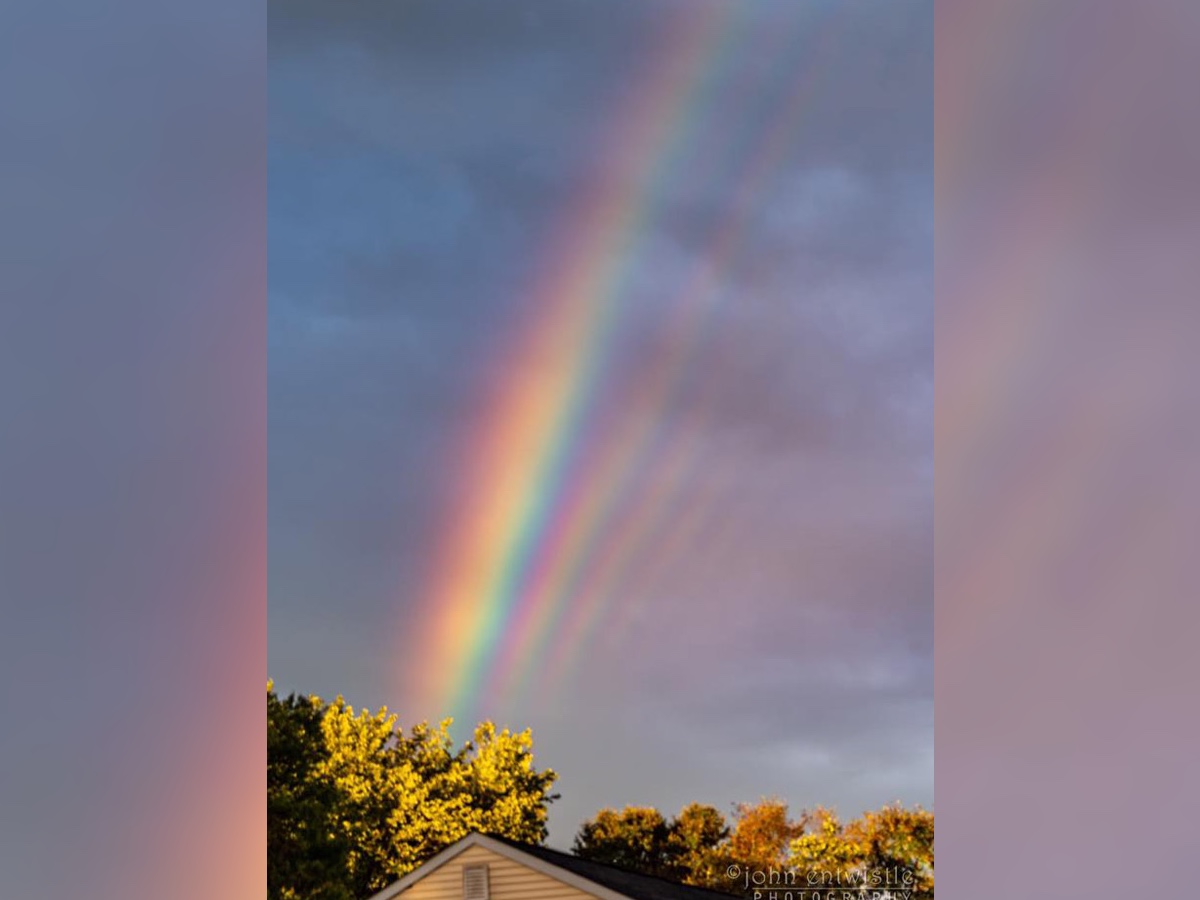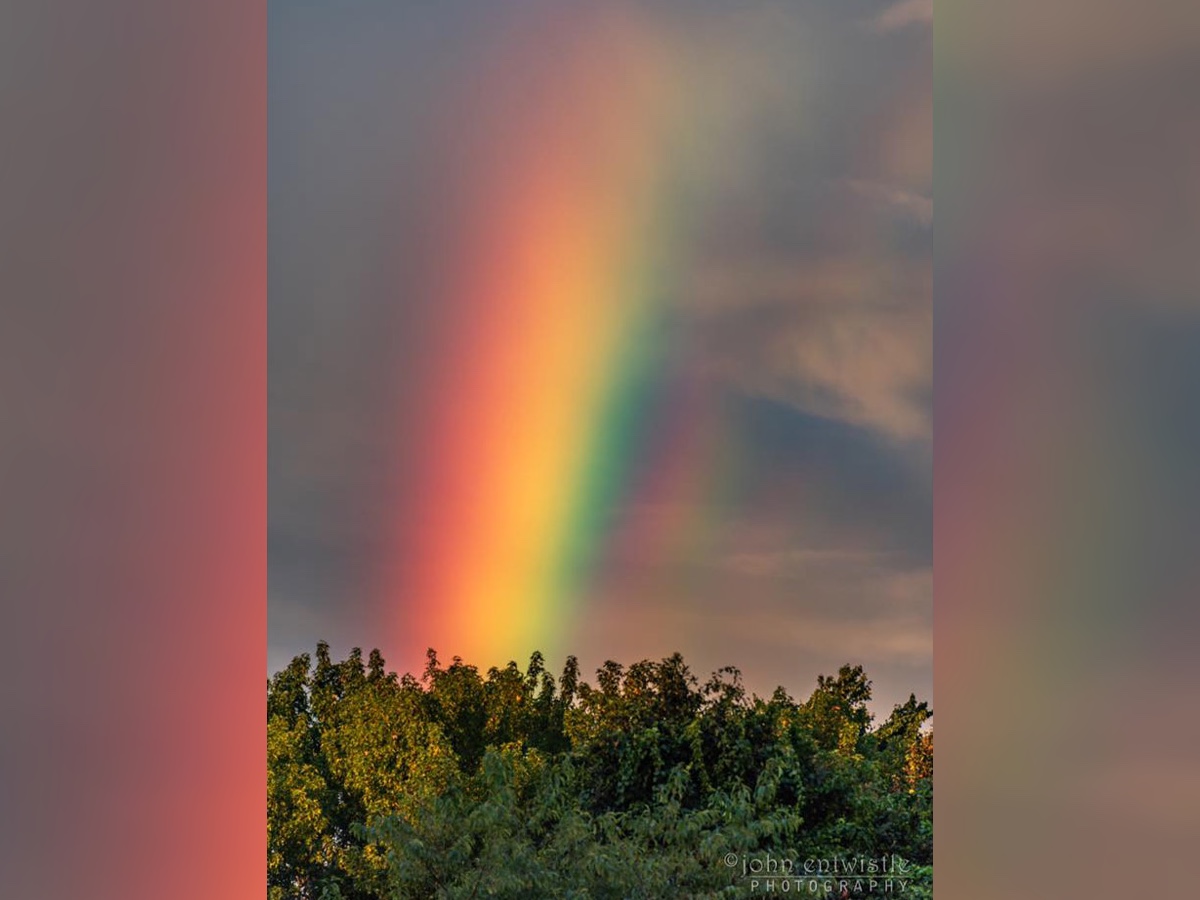Rare Quintuple Rainbow Captured by Photographer in New Jersey

While shooting a sunset in New Jersey recently, photographer John Entwistle got another gorgeous sight: a sky painted with what looked like a set of five rainbows.
"I could be wrong but that sure looks like a quintuple rainbow at sunset tonight over the Jersey Shore, NJ," Entwistle wrote on Instagram on Sept. 18.
Supernumerary rainbows like this one consist of a primary rainbow — the brightest and most vivid of the bunch — as well as at least two other, less brilliant, rainbows. In the case of the rainbow captured by Entwistle, five supernumerary rainbows were visible. [Strange & Shining: Gallery of Mysterious Lights]
"In general, supernumeraries are quite common. There are many pictures of 2 or 3 supernumeraries," Gunther Können, a retired climate scientist with the Royal Netherlands Meteorological Institute, told Live Science in an email. "But the appearance in nature of 5 supernumeraries is exceptional."

Raymond Lee, a research professor at the U.S. Naval Academy in Annapolis, Maryland, agreed: "Supernumerary rainbows are actually fairly common and, despite their superfluous-sounding name, are an intrinsic part of any rainbow." Even so, seeing these rainbows is challenging because they are not as bright as their primary parent bow and they tend to get obscured by the primary rainbow's vivid colors, he added.
The two types of rainbows form in just about the same way, except for one difference: The main rainbow forms when sunlight enters a water droplet — which is denser than the surrounding air — that light bends or refracts. Once inside the water droplet, the light also reflects off the back of the drop; and then as it exits, it is refracted again. Since different wavelengths of light get bent by different amounts, with this process happening in lots of tiny droplets, you get a rainbow.
The supernumerary bows happen due to interference between light waves that follow slightly different paths inside a raindrop, according to Lee. And these supernumeraries are much more likely to be visible when the raindrops are relatively uniform in size; that's because pairs of light rays that pass through the droplet are more likely to be in phase and create colored light. With different-size droplets, the light waves are more likely to cancel each other out, meaning no light and no supernumeraries.
Sign up for the Live Science daily newsletter now
Get the world’s most fascinating discoveries delivered straight to your inbox.
"Supernumeraries that appear under these conditions are conical, in the sense that their mutual spacing is smaller near the horizon than near the top of the rainbow. This is clearly the case in this picture," Können said.
If you haven't seen one in real life, check out the photo so you know what you're looking for. "Like owning a new car, however, once you're aware of supernumeraries' existence, you start to see them routinely in many different rainbows," Lee noted.
Originally published on Live Science.
Jeanna Bryner is managing editor of Scientific American. Previously she was editor in chief of Live Science and, prior to that, an editor at Scholastic's Science World magazine. Bryner has an English degree from Salisbury University, a master's degree in biogeochemistry and environmental sciences from the University of Maryland and a graduate science journalism degree from New York University. She has worked as a biologist in Florida, where she monitored wetlands and did field surveys for endangered species, including the gorgeous Florida Scrub Jay. She also received an ocean sciences journalism fellowship from the Woods Hole Oceanographic Institution. She is a firm believer that science is for everyone and that just about everything can be viewed through the lens of science.










